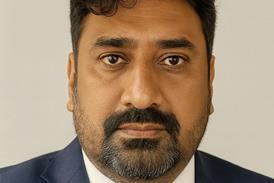European Union – Patent
Eli Lilly and Co v Human Genome Sciences Inc: Chancery Division, Patents Court: 3 August 2012
The instant proceedings concerned the defendant's European Patent (UK) No 0 939 804 (the patent). The patent described the encoding nucleotide, the amino acid sequence, and certain antibodies of a new human protein called Neutrokine-α, and included contentions as to its biological properties and therapeutic activities, as well as those of its antibodies (see Eli Lilly and Company v Human Genome Sciences Inc [2011] All ER (D) 18 (Nov)). In October 1996, the patent was filed by the defendant. In August 2005, it was eventually granted by the Examination Division of the European Patent Office.
In May 2006, the claimant filed an opposition to the patent. The claimant subsequently commenced proceedings in the Patents Court seeking revocation of the Patent (the main action). In July 2008, the judge found that the claims were not susceptible of industrial application, that they were insufficient and that they were obvious because of a lack of technical contribution. That decision was upheld by the Court of Appeal in relation to industrial applicability and related matters before being reversed by the Supreme Court. The Supreme Court found in the defendant's favour in respect of certain related matters of sufficiently and the case was remitted to the Court of Appeal to resolve the outstanding issues.
Those issued concerned the validity and scope of the antibody claims. The validity of the claims of the patent remained to be finally determined. The claimant had developed a fully human IgG4 monoclonal antibody with in vitro neutralising activity against both membrane-bound and soluble TNFSF13b (the Lilly antibody). The claimant sought a declaration that any supplementary protection certificate (SPC) which might be granted to the defendant in respect of the patent based upon any marketing authorisation (MA) obtained by the claimant for the Lilly antibody would be invalid.
The claimant made an application for the court to made an immediate reference to the Court of Justice (ECJ). The defendant applied to strike out the claim. The claimant contended that: (i) it was impermissible for a person to apply for an SPC based upon an MA obtained by another person when the two persons had no connection with each other (the third party SPC issue); and (ii) the patent did not specify or identify the Lily antibody in its claims so that a valid SPC could not be obtained even where the patent itself had been upheld as valid. The defendant contended that the claim should be struck out as: (i) the claim raised purely hypothetical questions to which an answer might never be needed; and (ii) the claim sought to raise matters in relation to which there was in place a statutory procedure under which the grant of and challenge to SPCs was to be made and the instant court should not subvert that procedure by entertaining actions for declaratory relief. Consideration was given to Council Regulation (EC) 469/2009 (concerning the supplementary protection certificate for medicinal products) (the Regulation).
The court ruled: (1) The holder of a basic patent could make an application for an SPC in reliance on an MA granted to a third party having no connection of any sort with that holder (see [62] of the judgment). The ECJ had assumed that it was, in principle, possible to grant an SPC even where the patent was held by one person and the MA was held by another. Such an assumption was entirely justified on a literal reading of the operative parts of the Regulation. Further, it was the research leading to the basic patent which the Regulation was designed to recognise. It was no part of the philosophy as articulated by the ECJ that the protection should only be afforded if the product was brought to the market by the holder of the patent.
It had been held by the ECJ that the purpose, or at least a primary purpose, of the Regulation was to confer supplementary protection on the holders of basic patents, without instituting any preferential treatment amongst them. Furthermore, nothing in the Regulation suggested that the relevant national authority was to be burdened with the task of investigating the relationship between the holder of the patent and the holder of the MA to ascertain whether the necessary element of connection existed (see [43]-[46], [54] of the judgment). The answer to the third party SPC issue was sufficiently clear to be decided without a reference (see [105] of the judgment). Biogen Inc v Smithkline Beecham Biologicals SA: C-181/95 [1997] ECR I-357 considered.
(2) The answer to the specification issue was a matter of EU law to which the answer was unclear in the light of the existing guidance given by the ECJ on the meaning of the Regulation. However, in the circumstances, it was not appropriate to make a reference to the ECJ. A reference ought only to be made if the facts relevant to the issues had been established. Further, there was a real possibility that an answer would not be obtained until the middle of 2015. By that time, the validity of the patent or otherwise would have been finally established and, if invalid, the need for a reference fell away (see [5], [107], [116] of the judgment). The application for an immediate reference would be refused (see [120] of the judgment).
(3) The court had jurisdiction to entertain an action for the declaratory relief which the claimant sought. The action for a declaration should not be struck out. There were powerful commercial reasons why the claimant should be allowed to proceed with the action and the countervailing factors identified were not sufficient to tip the balance. The claimant was unable to invoke the procedures for challenging the grant of an SPC because no MA had yet been obtained and no application for an SPC could be made.
It was the very uncertainty of the meaning of the Regulation which created the commercial uncertainty facing the claimant. The court should assist in providing the certainty which the claimant reasonably required (see [92], [101] of the judgment). The action would be stayed until the Court of Appeal had given its decision as to the validity of the patent (see [103] of the judgment). Arrow Generics Ltd v Merck & Co Inc [2007] All ER (D) 03 (Aug) considered.
Tom Mitcheson (instructed by Field Fisher Waterhouse) for the claimant; Daniel Alexander QC and Mark Chacksfield (instructed by Powell Gilbert LLP) for the defendant.



























No comments yet